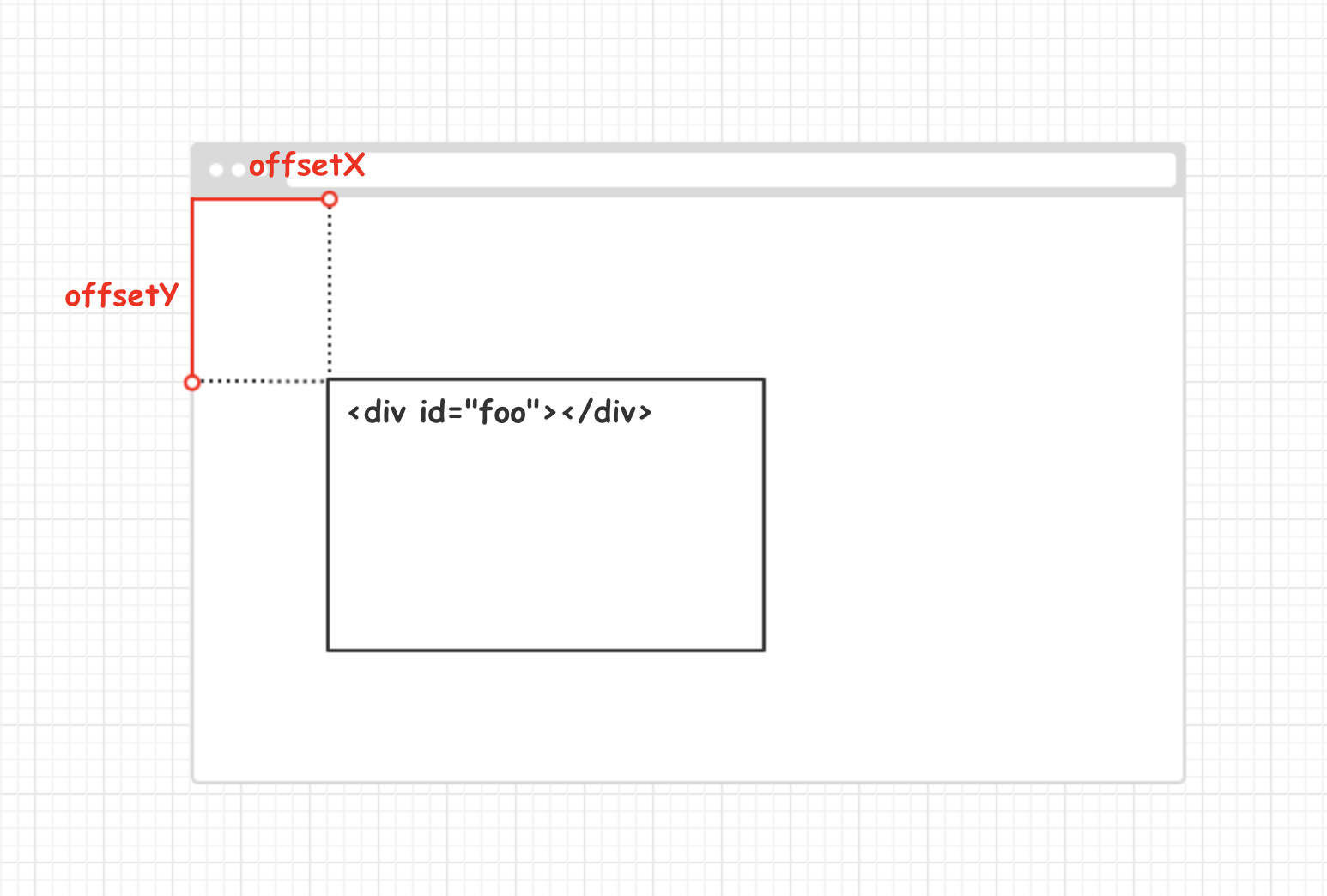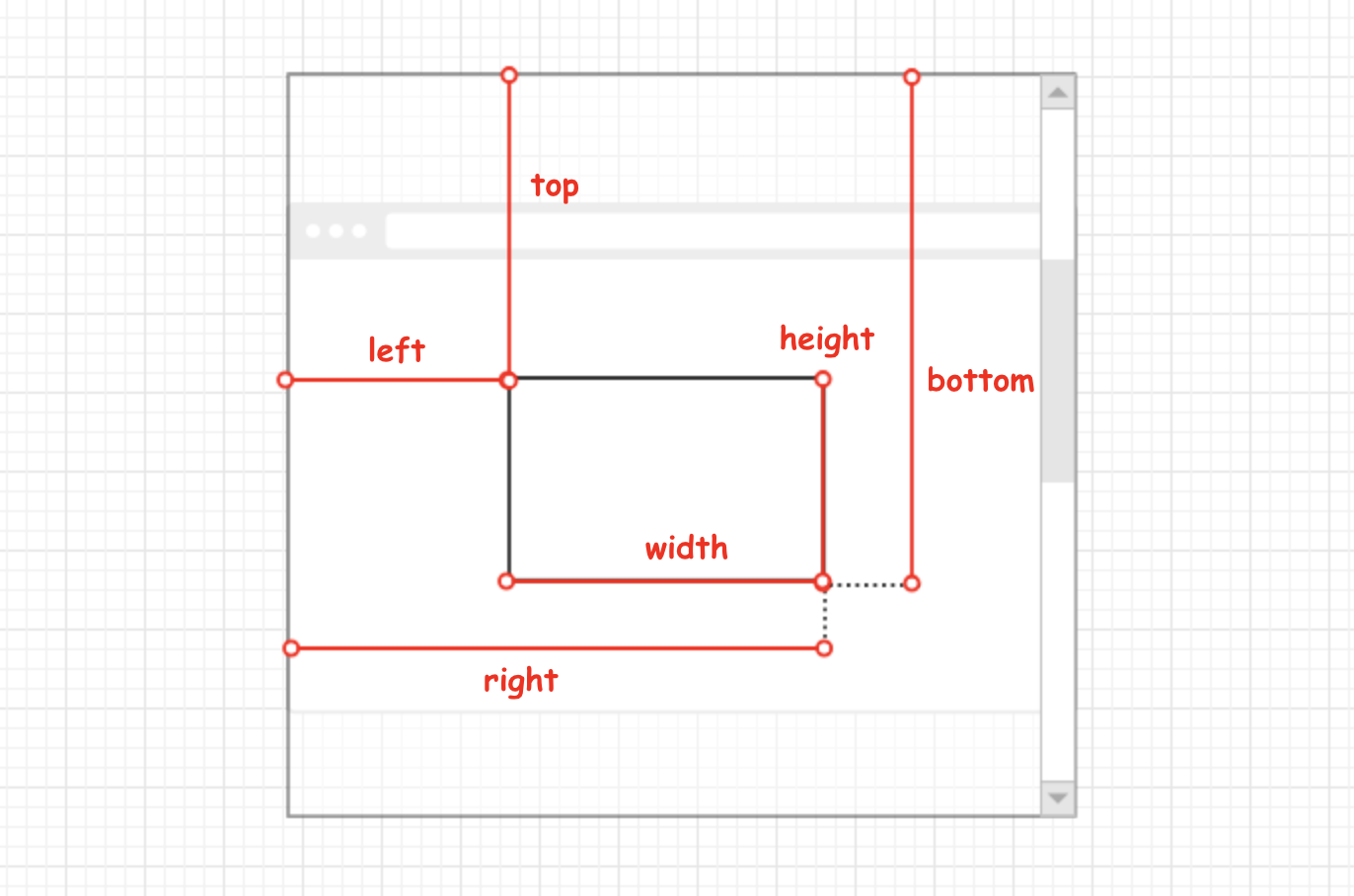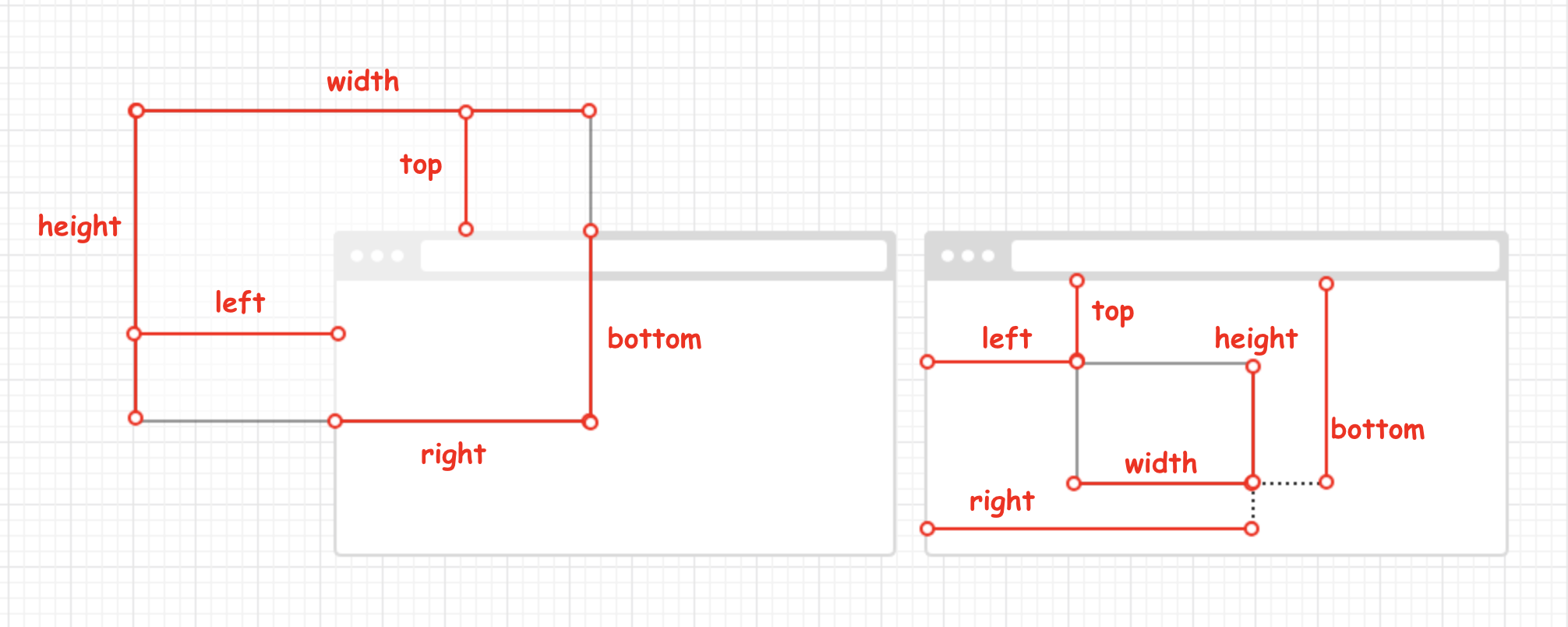文档视图和元素视图
文档视图和元素视图中包含的与元素大小位置相关的方法主要有:
elementFromPoint()getClientRects()getBoundingClientRect()scrollIntoView()
elementFromPoint
根据坐标获取元素
elementFromPoint() 根据文档上横纵坐标,获取当前文档上该坐标点上位置最顶层的 DOM 元素,该坐标是相对于文档的浏览器窗口左上角为原点来计算的,通常横纵坐标为正数。
const foo = document.elementFromPoint(offsetX, offsetY);
⚠️ 参数 offsetX 和 offsetY 为坐标数值,不需要单位(比如像素单位 px)

使用如下示例代码:
const foo = document.elementFromPoint(offsetX, offsetY);console.log(foo); // <div id="foo"></foo>
此方法可以用于检测元素是否发生重叠或是碰撞
getClientRects() 获取元素占据页面的所有矩形区域
getClientRects() 方法返回一组元素相关的只读属性的矩形集合 DOMRectList。包括当前元素相对于浏览器视口左上角的顶端(top)、底端(bottom)、左端(left)、右端(right)的偏移量,元素自身的宽度(width)和高度(height)属性,以及元素自身的横(x)纵(y)坐标。
const rectCollection = ele.getClientRects();
⚠️ 当元素发生滚动时,顶端(top)、底端(bottom)、左端(left) 和 右端(right) 的偏移量也会发生改变。

- top:元素左上角距浏览器页面顶端的距离
- left:元素左上角距浏览器页面左端的距离
- bottom:元素右下角距浏览器页面的顶端的距离
- right:元素右下角距浏览器页面的左端的距离
- width:元素宽度(包括内容、边距和边框)
- height:元素高度(包括内容、边距和边框)
浏览器页面指文档整体宽高组成的区域,通常通过滚动条查看未在可视区域内显示的页面内容。
使用如下示例代码:
const foo = document.getElementById('foo');const fooRects = foo.getClientRects();console.log(fooRects);// 输出内容如下:DOMRectList[{top: 100,left: 100,right: 200, // => (left + width)bottom: 200, // => (top + height)x: 100,y: 100,}];
getBoundingClientRect() 获取元素位置
getBoundingClientRect() 方法放回一组元素的左、上、右及下分别相对浏览器可视窗口的位置的集合 DOMRect。
getBoundingClientRect 是 DOM 元素到浏览器可视范围的距离(不包含文档卷起的部分)。
const rectObject = ele.getBoundingClientRect();

- top:元素左上角距浏览器可视区域顶端的距离
- left:元素左上角距浏览器可视区域左端的距离
- bottom:元素右下角距浏览器可视区域的顶端的距离
- right:元素右下角距浏览器可视区域的左端的距离
- width:元素宽度(包括内容、边距和边框)
- height:元素高度(包括内容、边距和边框)
使用如下示例代码:
const foo = document.getElementById('foo');const fooBoundingRect = ele.getBoundingClientRect();console.log(foo);// 输出内容如下:DOMRect {top: 100,left: 100,right: 200, // => (left + width)bottom: 200, // => (top + height)width: 100,height: 100,x: 100,y: 100,}
scrollIntoView()
⚗️ 这是一个实验中的功能
scrollView() 方法让当前的元素滚动到浏览器窗口的可视区域内。
element.scrollIntoView(alignToTop || options);
| 参数 | 说明 | 类型 |
|---|---|---|
| alignToTop |
| boolean |
| options | 一个带有选项的配置对象,详细参数查看下表 | object |
options
| 参数 | 说明 | 类型 | 默认值 |
|---|---|---|---|
| behavior | 定义缓慢函数,可选值为 auto instant smooth | string | auto |
| block | 定义块级元素对齐方式,可选值为 center end nearest | string | center |
| inline | 定义行内元素对齐方式,可选值为 center end nearest | string | nearest |